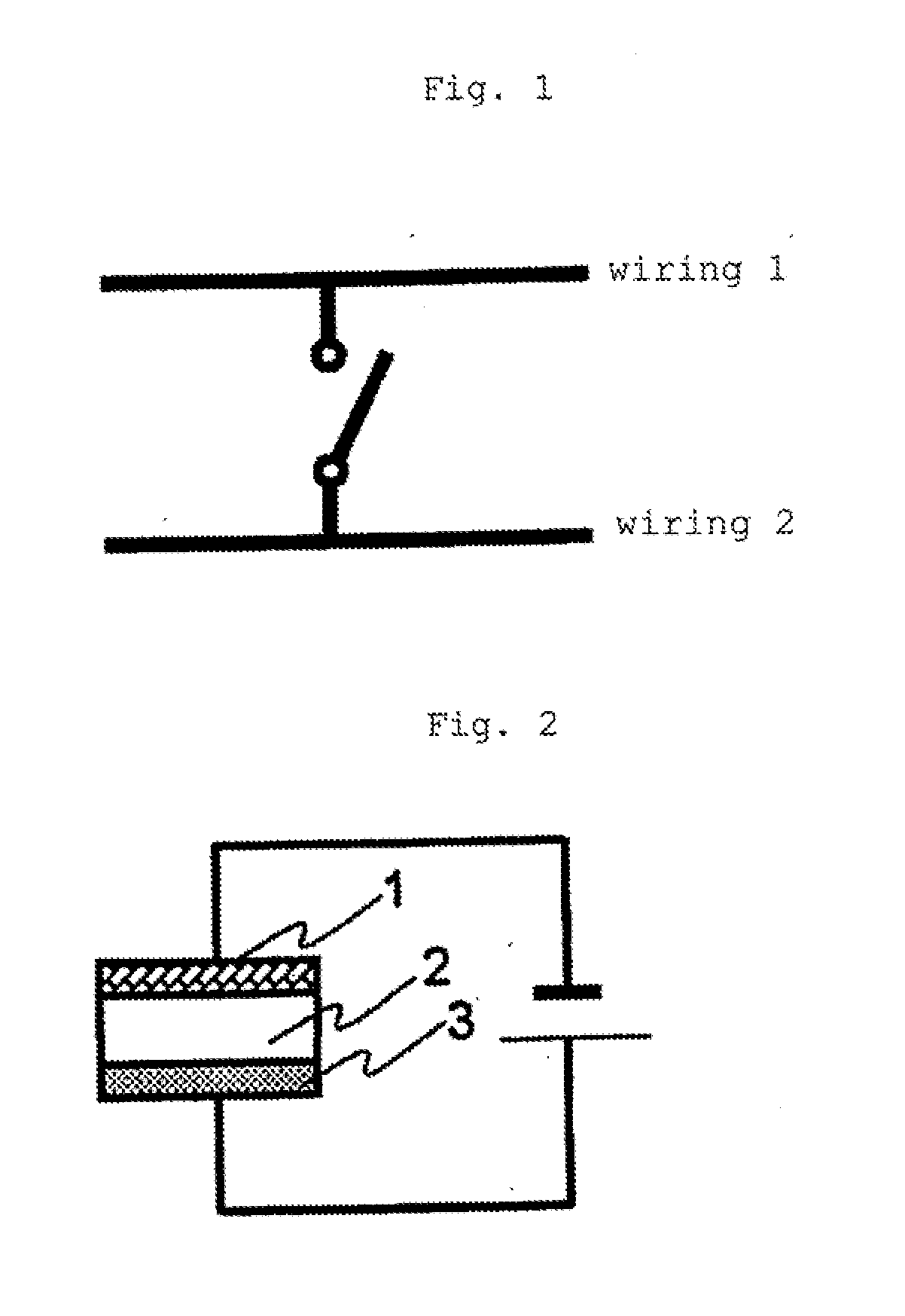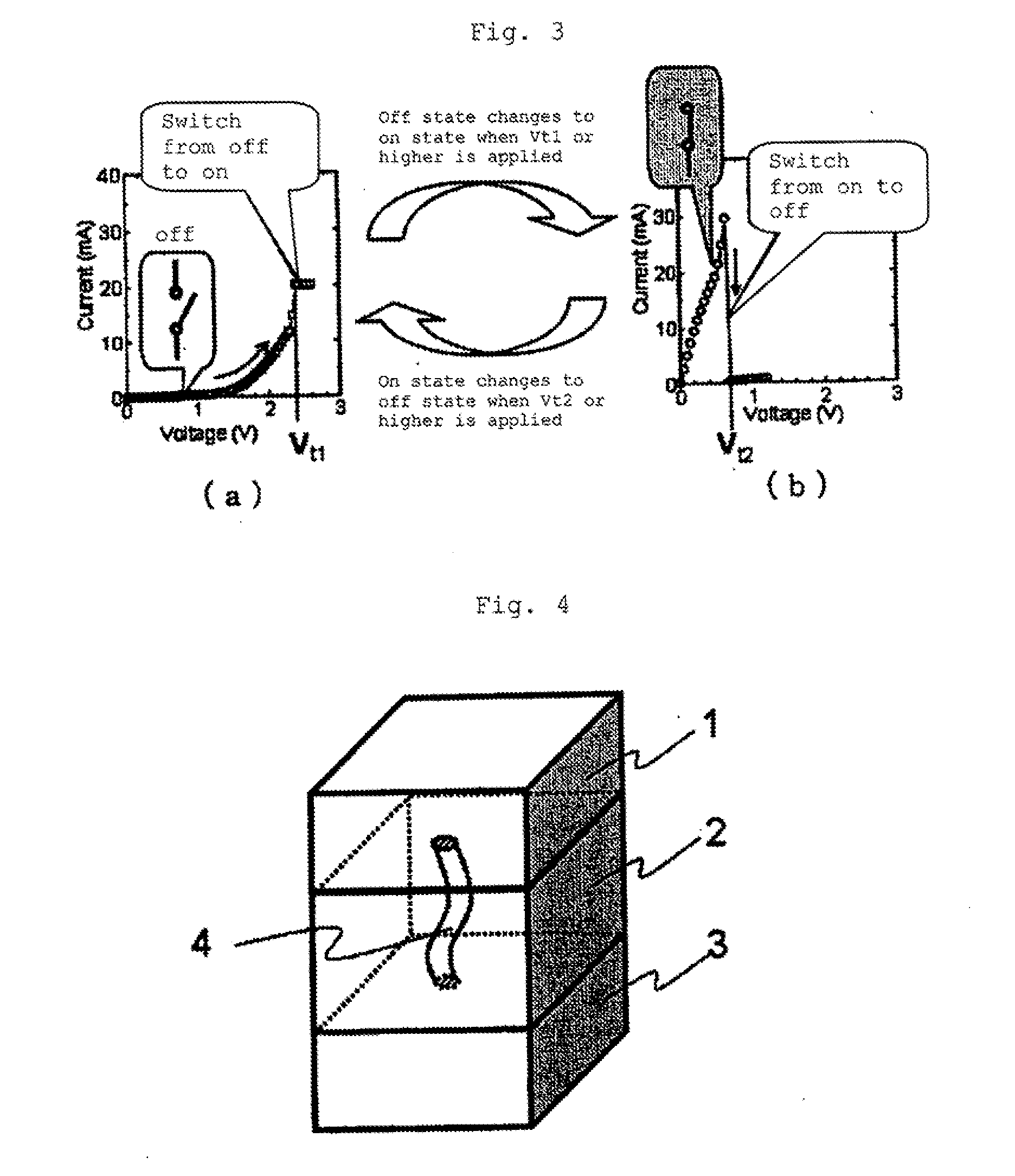Resistance change element and semiconductor device including the same
a technology of resistance change element and memory element, which is applied in the direction of semiconductor devices, bulk negative resistance effect devices, electrical appliances, etc., can solve the problems of different performance requirements for resistance change element when it is used as a memory element, and it is difficult to miniaturize even a semiconductor transistor which does not have charge accumulation function, etc., to achieve low resistance and high off resistance
- Summary
- Abstract
- Description
- Claims
- Application Information
AI Technical Summary
Benefits of technology
Problems solved by technology
Method used
Image
Examples
first exemplary embodiment
[0061]FIG. 7 shows the current-voltage characteristic in the ON state and the OFF state when 10 mol % of Ta was added to nickel oxide (NiO). The upper and lower electrodes were made of Ru.
[0062]The upper and lower electrodes and the resistance change film were formed by sputtering in the present experiment. In particular, the resistance change film was formed by using a sintered target made of NiO to which Ta was added. The film thickness was approximately 80 nm. The lower electrode and the resistance change film were not processed, but the upper electrode was shaped into a circle having a diameter of 100 μm.
[0063]The characteristic indicated by the dashed lines is the current-voltage characteristic of the resistance change element made of NiO to which no Ta was added. FIG. 7 indicates that the current-voltage characteristic in the ON state remains unchanged irrespective of whether or not Ta was added, but adding Ta can increase the OFF resistance by at least triple digits, for exam...
second exemplary embodiment
[0064]While the present invention is significant for a switch that controls interconnection between wiring lines, the present invention may be applied to a memory element connected in series to a semiconductor transistor, a diode, or any other active element. When the present invention is applied to a memory element and when the difference between the ON resistance and the OFF resistance is large, high performance, for example, a short readout time, can be achieved.
[0065]FIG. 8 shows an exemplary embodiment of a semiconductor storage device having a configuration in which the resistance change element of the present invention is formed on a semiconductor transistor. A semiconductor substrate made of silicon (Si) or any other suitable element is first prepared. A transistor is formed on the semiconductor substrate, and a wiring line 115 made of W, Al, Cu, or any other suitable element is formed on the drain 113 of the transistor in such a way that the wiring line 115 extends upward a...
PUM
 Login to View More
Login to View More Abstract
Description
Claims
Application Information
 Login to View More
Login to View More - R&D
- Intellectual Property
- Life Sciences
- Materials
- Tech Scout
- Unparalleled Data Quality
- Higher Quality Content
- 60% Fewer Hallucinations
Browse by: Latest US Patents, China's latest patents, Technical Efficacy Thesaurus, Application Domain, Technology Topic, Popular Technical Reports.
© 2025 PatSnap. All rights reserved.Legal|Privacy policy|Modern Slavery Act Transparency Statement|Sitemap|About US| Contact US: help@patsnap.com



